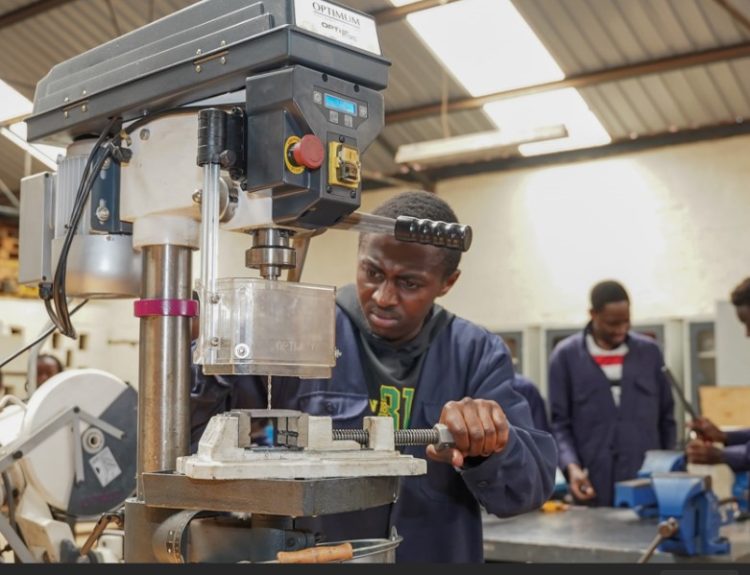Kenya’s real estate sector has been expanding rapidly, driven by urbanization, growing middle-class demand, and infrastructure development. Among the players shaping this transformation is Dreamville Properties (often referred to simply as Dreamville). Through a portfolio of land deals, residential developments, gated communities, and strategic locations, Dreamville is contributing in several ways to Kenya’s housing, investment, and spatial planning challenges.
Here’s how Dreamville is making a tangible difference:
Key Areas of Impact
1. Increasing Housing Options, Especially for the Middle-Income Segment
Dreamville is developing multiple residential projects spread across Nairobi and its environs. These include:
- Riziki Apartments in Kileleshwa, offering 2- and 3-bedroom units. dreamville.co.ke
- Lifestyle Terraces in Syokimau along Mombasa Road: four-storey blocks with 280 two- and three-bedroom apartments. dreamville.co.ke
- Lifestyle Gardens, also in Syokimau, with 70 four-bedroom maisonettes. dreamville.co.ke
These projects help fill gaps in affordable and decent housing away from central but expensive neighbourhoods, targeting people who want modern amenities without being located in the most premium areas.
2. Securing Land and Strategic Locations for Development
Land is a key factor in real estate development. Dreamville has secured and is marketing several prime land parcels:
- Plots in Konza (Machakos County), 100 acres priced at about Ksh 1.8 million per acre. These properties border the upcoming Konza Technology City, benefiting from the planned infrastructure. dreamville.co.ke
- 50×100 plots along Garissa Road — close to universities, malls, and hospitals. dreamville.co.ke
- Plots near Ruiru near Northlands City, benefitting from proximity to highways and bypasses. dreamville.co.ke
By doing so, Dreamville supports urban expansion in anticipated growth corridors. This gives buyers options in areas likely to appreciate and prepares land for future infrastructure.
3. Offering Amenities, Security, and Infrastructure
Many of Dreamville’s developments are more than just four walls. They tend to include features that raise quality of life:
- Secure gated communities, with controlled access and CCTV systems. dreamville.co.ke+2dreamville.co.ke+2
- Standby power generators, boreholes, and reliable water supply in developments to buffer against service interruptions. dreamville.co.ke+1
- Landscaped gardens, private balconies, modern kitchens, and sometimes communal amenities (lifts, gyms) in higher-end units. dreamville.co.ke+2dreamville.co.ke+2
These enhance desirability, livability, and often help boost property values.
4. Bridging the Gap Between Investment & Real Estate Access
For many Kenyans, real estate isn’t just a place to live—it’s an investment. Dreamville addresses both functions:
- Buyers looking for homes have newer, more quality-finished options beyond traditional older stock.
- Investors can buy plots or apartments in developing corridors (like Konza, Ruiru, etc.) which are likely to appreciate as infrastructure improves.
This dual appeal helps channel savings into productive assets, providing a hedge against inflation and often delivering returns.
5. Supporting Urban Expansion & Planning
By developing in peri-urban zones (areas just outside the core city) and along major transport corridors like Mombasa Road, the SGR, or near planned hubs like Konza, Dreamville contributes to structured urban sprawl. Rather than ad hoc, fragmented growth, their developments help shape anticipated growth zones, which helps in:
- Planning for roads, water, power in advance
- Reducing congestion in city centers by providing desirable housing outside yet connected enough
- Encouraging mixed land use — residential near amenities, shops, schools
Challenges & Considerations
While Dreamville is making a difference, there are also hurdles and trade-offs, as is typical in the real estate sector:
- Affordability vs. cost of land / construction: Prices in many of their projects, even outside the most premium areas, are still significant for many Kenyans. Whether these developments fully reach the lower-middle income groups remains a question.
- Infrastructure dependency: Some of the plots or developments are reliant on future infrastructure (roads, utilities). If government or county plans delay, the attractiveness or usability of some of these plots may lag.
- Regulatory / permitting delays can affect timelines, which in turn affect liquidity for investors or satisfaction for buyers.
- Environmental & sustainability questions: As development moves into peri-urban areas, there’s always concern about ecological impact, water use, proper waste management, etc.
Why Dreamville’s Role Matters
These impacts have broader implications for Kenya:
- Meeting demand: With Kenya’s urban population growing, housing need is huge. Developers like Dreamville help increase supply.
- Stimulating local economies: Construction projects create jobs (builders, artisans, security, maintenance), spur demand for materials, and help in infrastructure development.
- Wealth creation: For many middle-income earners, real estate is one of the more stable investment forms. By providing more products, Dreamville gives Kenyans options to grow assets.
- Shaping the city: As Nairobi and its outskirts expand, how, where, and what kinds of housing are built will determine traffic patterns, urban sprawl, and the quality of life. Developers that invest thoughtfully help guide better urban planning outcomes.
Conclusion
Dreamville Properties is not a marginal player in Kenya’s property scene. Through its mix of residential developments, strategic land sales, amenity-rich gated communities, and presence in emerging property growth zones, it is helping to expand affordable housing, enable investment, and shape urban expansion.
There’s more work to be done—especially around affordability, sustainability, and supporting infrastructure—but Dreamville is contributing positively to freeing up space, opportunity, and choice for Kenyans.



